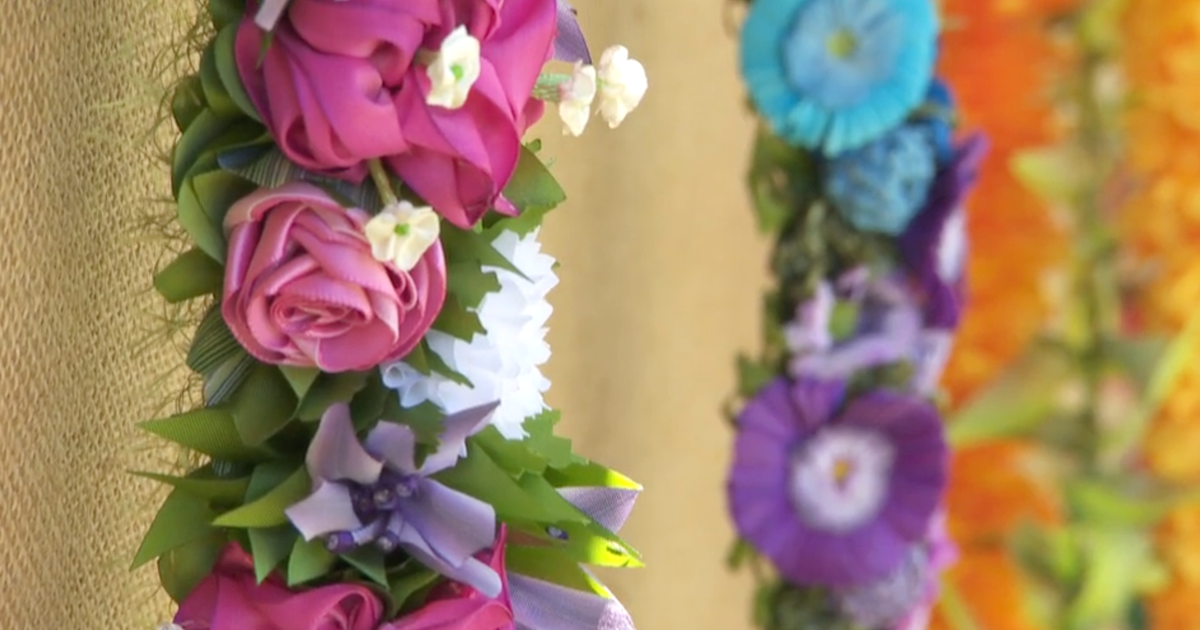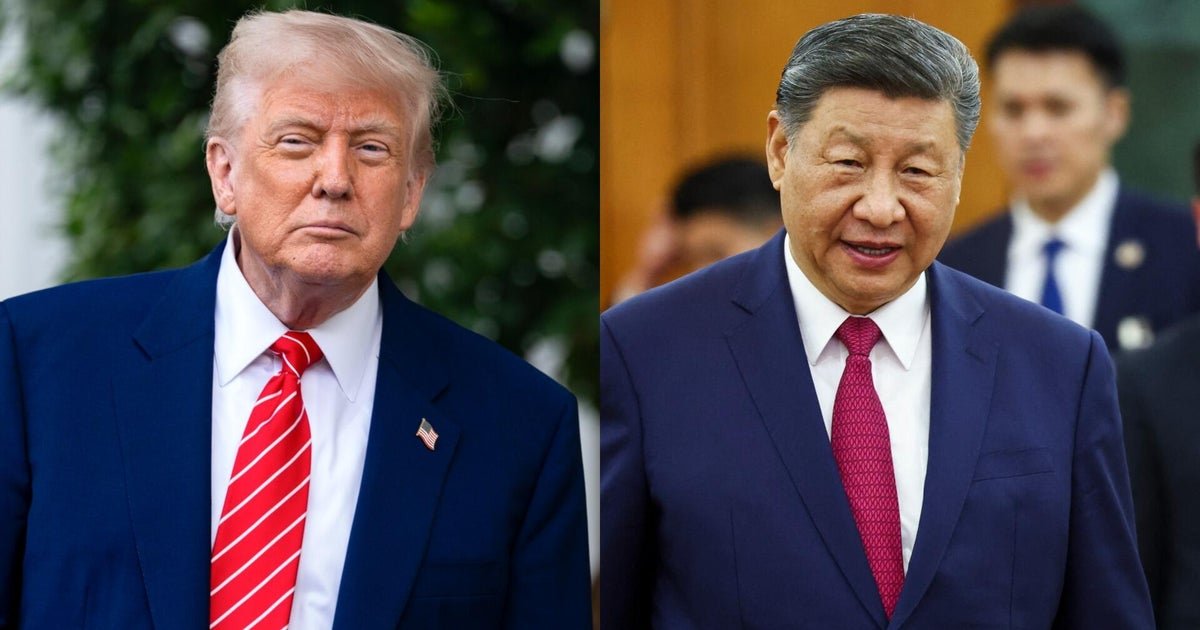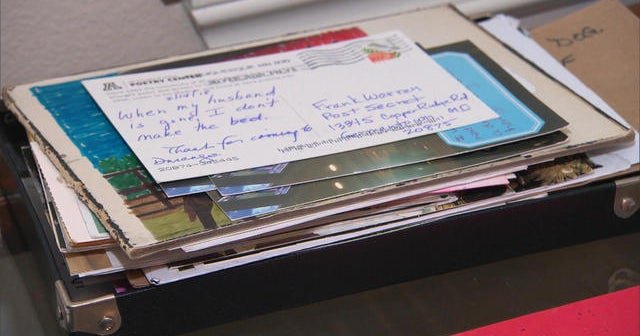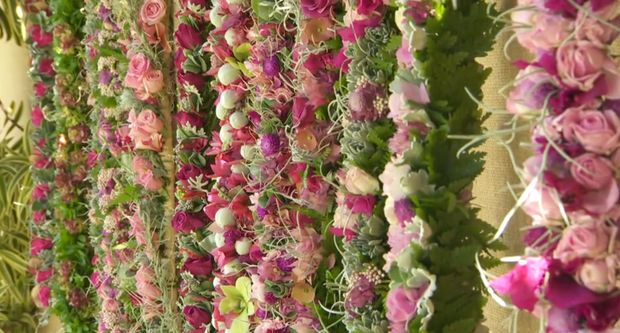
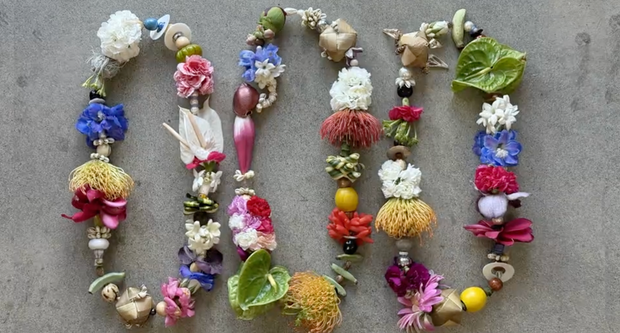
From its golden sun to its turquoise surf, Hawaii can always take your breath away. But it’s the colorful leis that may dazzle the most.
The island’s exquisite array of flowers, valued for their fragrances, are harvested by Hawaiians for the ancient tradition of lei making.
Hawaii native Meleana Estes picks flowers – like the valued flower puakenikeni, known as the perfume flower tree ten cent flower – to create a colorful palette for her leis. A single lei can use 300 individual flowers and take hours to make.
An “expression of aloha”
Hawaiians have been proudly sewing leis for more than 1,000 years. It’s a tradition that was introduced by early Polynesian settlers who wore garlands around their necks or heads as a gesture of respect for the gods.
There’s never a wrong time to bestow someone with a lei, Estes says. Today, Hawaiians hand out leis for nearly every occasion – from weddings to funerals, to airport pickups and beyond.
“Really a lei is your expression of aloha. Your love,” Estes explained, adding that it can also show a warm welcome to a house guest.
Estes learned the intricate art of lei-making from her grandmother or “Tutu,” and published a book called “Lei Aloha” to celebrate her traditions.
“She was very intentional. I feel like my Tutu would think about it for three days prior, you know, as she’d start gathering with intention for that one person,” Estes said.
With dozens ofspecies of flowers growing on the islands, the designs are endless. Estes makes extraordinary creations for family and friends using a long needle and thread.
“It’s beautiful, very architectural,” Estes said of the process.
You can see the colorful creations on display at the Annual Lei Day Celebration in Hawaii, held every May 1 since 1929. Dozens of master lei makers enter their work for a chance of being crowned best in show by judges, including Jamie Adams Detwiler.
“It’s really difficult” to pick just one winner, Detwiler said, noting that she looks for “what feeling” the leis bring to her and that they stay true to the lei method.
This year’s winner: a customary lei kui or sewn lei.
Getting creative
But while lei making remains popular, its future could be in peril. Suburban sprawl has paved over many flower farms and climate change has overheated remaining land. An estimated 90 percent of flowers used in leis are now imported from countries like Thailand.
Andrew Mau, who owns a small Oahu boutique called ISLAND-BOY, where he makes leis from mostly family sourced flowers, said he’s seeing the impact firsthand.
“Everybody’s personal lei making stash or, you know, garden or mango tree or whatever you have, it’s been reduced,” he said.
The fact that a lei only lasts around two or three days has also added more stress on the island’s dwindling flower stock, forcing lei-makers like himself to adapt.
“We work with what we can get. Sometimes we don’t get enough flowers to make a lei. We use unripe fruit. An ornamental banana. We recently had someone bring in avocados from their tree,” said Mau, though he admits it breaks from tradition.
Mau’s work – particularly his “forever lei” – is so popular it regularly sells out.
“A forever lei is our response to the perishability of flowers. We work with wood beads – seeds, shells, nuts…it doesn’t have an expiration date,” he explained.
[ad_2]
